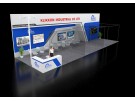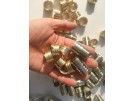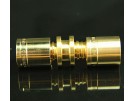Tech News
Soldering is a handy tool when it comes to bathroom plumbing repair. Once you get the hang of how to solder your pipes, you can add fixtures and repair plumbing leaks on your own without having to call in a plumber. Anyone with a little experience with a propane torch can tell you, however, that soldering is never a one-size-fits-all operation, with different jobs requiring different techniques. In particular, soldering brass pipes can be more challenging than soldering copper. Read on to learn why and to learn some tips on how to successfully solder a brass fitting.
Brass Fittings Require Higher Temperatures
The basic process for joining brass or copper pipes is essentially the same: Clean the pipe ends that you intend to join until they are shiny and free from any burrs or debris. Next, brush on the plumbing flux and push the pipes together. Finally, heat up the fitting using a torch, while dripping liquid solder into the joint to create a secure and water-tight barrier.

The big difference between copper and brass, however, is that brass requires much more heat for the solder to work properly. In fact, you may have to heat the metal five or six times as much as copper in order for it to reach the point where the solder will melt! This may require higher heat from the torch, more time applying heat to the metal, and diligent attention to hitting the pipe with the flame from all directions.
Making Your Solder Job Work the First Time
Brass pipes are quite uncommon, so usually when you are soldering brass, it means you are working with a valve. If that is the case, you should make sure the valve is open when you begin to solder. Otherwise, the pressure inside can build up from all the heat, which can cause air to escape and create a leak.
Some plumbers even find that propane torches just aren’t hot enough to get the job done. Instead, they turn to MAPP gas when working with brass, which is a mix of methylacetylene and propadiene that can reach a higher temperature than propane. Another good tip is to not skimp on the flux, or soldering paste, but instead apply it liberally, which etches the pipes and facilitates the process of the actual solder binding the metal together.












